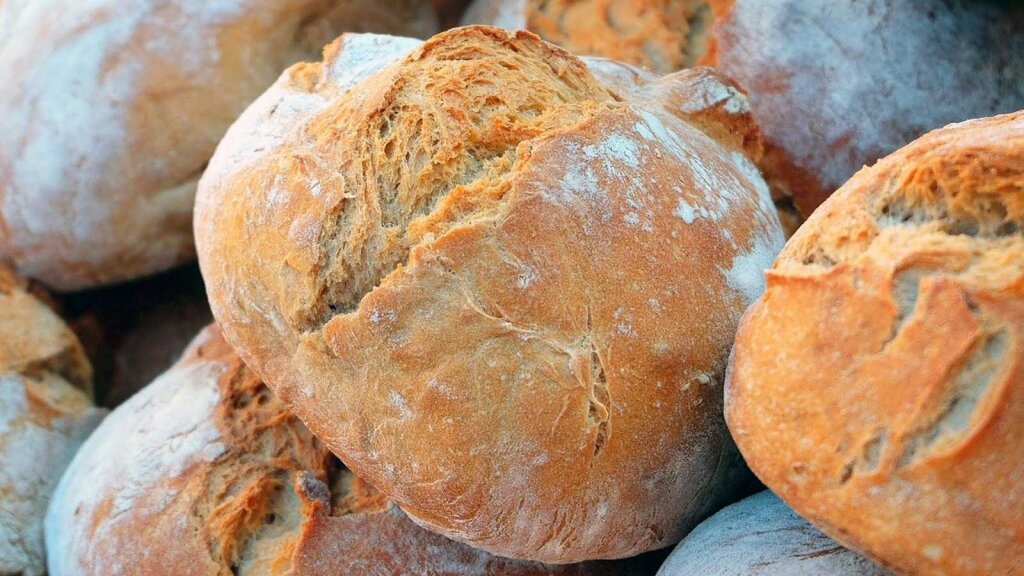
Advertisement
From sourdough starters to homemade pizza doughs, baking today is at an all-time high. And many of our favorite baking recipes call for classic, familiar ingredients like salt, sugar and flour. But there's one staple that can intimidate even the most seasoned baker: yeast.
This single-celled microorganism is integral to the baking process, particularly when it comes to making many types of bread. Yeast sparks the fermentation process, transforming a solid, dense ball of dough into a soft, risen loaf.
But not all yeast is the same. In fact, there are more than 1,500 recognized species of yeast in the world, with the first yeast dating back hundreds of millions of years. Today's primary baking yeast species is Saccharomyces cerevisiae. It's responsible for two of the tastiest yeast-related food products out there: bread and beer.
So how can a tiny organism, only visible with a microscope, create two of the world's most beloved meal-time staples? And is baking with yeast as intimidating as it seems? We talked with Kelly Olson, a representative for Red Star Yeast, to find out.
How Does Baker's Yeast Work?
While it's often associated with breads and beer, yeast has a surprising relative: mushrooms. That's because yeast is actually a single-celled fungi itself, according to the Red Star Yeast blog. Yeast used by baker's, S. cerevisiae, is known as sugar-eating fungus. Simple sugars like sucrose, fructose and glucose, and maltose help the yeast thrive, and once metabolized, the sugars ultimately lead to risen bread.
How? The process, known as alcoholic fermentation, starts as soon as the flour, water and yeast are stirred together. Yeast enzymes metabolize the simple sugars, releasing carbon dioxide and ethyl alcohol byproducts into air bubbles in the bread dough. The carbon dioxide bubbles can't escape the elastic dough, so instead it causes it to rise. The dough rises more as additional air cells fill with carbon dioxide, which eventually results in what we know as yeast-leavened bread.
Active Dry Yeast vs. Instant Yeast
Two primary types of commercial baker's yeast include dry yeast and instant yeast. Both perform yeast's No. 1 task — leavening — but each brings something slightly different to the table.
"Active dry yeast is traditionally one that requires rehydration. It is a moderate acting yeast compared to an instant yeast," Olson says. "The idea is that with instant yeast, you could blend it directly with flour and other dry ingredients then add your liquids. Instant yeast is also known to be faster acting, although the two types of dry yeast can generally be used interchangeably in most recipes."
The fermentation process with active dry yeast takes longer than instant yeast. This can lead to subtly different flavors in breads made with active yeast over instant.
"When yeast has more time to work on the dough, more flavor and a better texture is developed," Olson says. "So there's some benefit to the more moderate active dry yeast, but then there are other products where instant yeast is very favorable in as well. People can use both types in all recipes."
Can You Make Your Own Yeast?
In short, yes. When people made bread in ancient times, they may not have called yeast by its name, but they were making their own yeast. The same goes for making a sourdough starter. You simply mix equal parts filtered (not chlorinated) water and flour and allow it to ferment. But these are different from the packets of baker's yeast available in stores.
"Commercial yeast is made from a pure strain of Saccharomyces Cerevisiae," Olson says. "When you try to make your own yeast, you're actually getting wild yeast that's not necessarily from Saccharomyces Cerevisiae. You're not getting pure yeast, and you're not necessarily getting something that's consistent or that will perform the same as commercial yeast."
That unpredictability — both with wild yeast and store-bought yeast — is one reason yeast intimidates most bakers; it's not black and white. But Olson, who yields numerous calls from Red Star's yeast customers, says baker's yeast is not as scary as it seems. It really comes down to watching your dough while it rises versus sticking solely to the recipe timetables.
"I always encourage people to go by the look and feel of the dough rather than sticking to exactly what the recipe says," she says. "Use the recipe as a guide but realize that things can vary from batch to batch, so it's best to go by what the dough is doing."
Yeast in Wine and Beer
Beer brewers and winemakers also use S. cerevisiae to create alcoholic beverages. In beer, yeast ferments the malted barley sugars to create alcohol. S. cerevisiae, the go-to for ale beers, is known as a top-fermenting yeast. It's the reason foam forms at the top of ale-type brews.
In beers brewed with Saccharomyces pastorianus, a bottom-fermenting yeast typically used in lagers, the yeast ferments more sugars than the top-fermenting yeast. This is why lagers have a cleaner taste, according to the European Food & Feed Cultures Association.
In wine production, yeast is already present on grape skins, but most winemakers also add a pure culture like S. cerevisiae to ensure the fermentation occurs reliably.
"bread" - Google News
July 15, 2020 at 01:21AM
https://ift.tt/3fzYRek
Yeast Is the Magic Microbe That Makes Bread Rise - HowStuffWorks
"bread" - Google News
https://ift.tt/2pGzbrj
https://ift.tt/2Wle22m
Bagikan Berita Ini















0 Response to "Yeast Is the Magic Microbe That Makes Bread Rise - HowStuffWorks"
Post a Comment